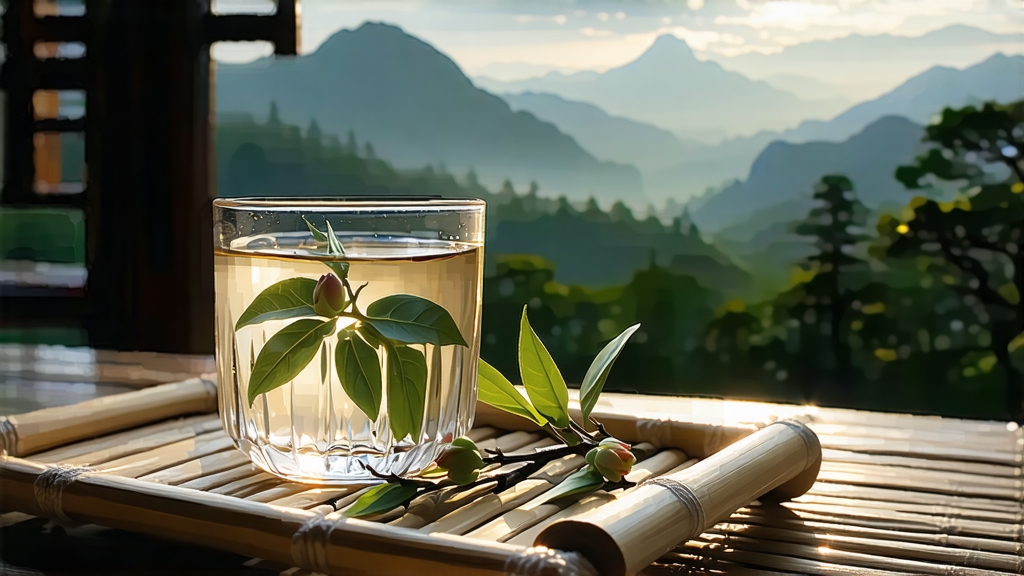
Bai Hao Yin Zhen—literally “White Hair Silver Needle”—is the quiet aristocrat of Chinese tea. To the uninitiated it looks like a handful of dormant twigs, yet the moment hot water kisses the down-covered buds they come alive, releasing a liquor the color of first light and a fragrance that moves between fresh melon, pine sap, and the scent that rises from river stones after summer rain. Understanding this tea is less a matter of tasting than of listening: its story is whispered through centuries of imperial tribute, monastic cellars, and the cool maritime mists that roll over northeast Fujian’s coastal hills.
History: From Imperial Tribute to Global Minimalism
The first verifiable record of Yin Zhen appears in the Song-era “Treatise on Tea” (1107 CE), where Emperor Huizong praises “white buds of the first flush, needle-straight and silver-furred.” For the next eight hundred years the buds were pressed into cakes, shipped north to the Forbidden City, and stored in jade jars whose lids were opened only at the Lantern Festival. When the Ming court switched to loose-leaf infusion in 1391, the cakes were smashed and scattered, but the tea gardens of Taimu Mountain remembered the shape of the unopened bud. By the late Qing, Fuding peasants were sun-drying the tips for overseas Chinese pharmacies in Singapore, marketing them as “cooling silver medicine.” European merchants encountering the cargo in 1891 at the Amoy port christened it “Silver Needle,” and the name stuck. Today the tea is both a luxury SKU in Parisian boutiques and a farmhouse comfort poured from enamel kettles in Fuding’s mud-brick kitchens.
Terroir: Where Ocean Meets Mountain
Authentic Yin Zhen is born inside a 30-kilometre radius centered on the towns of Taimu, Guan Yang, and Dian Tou. Here the East China Sea intrudes inland, creating morning fogs that act like a natural light diffuser, slowing photosynthesis and thickening the bud’s down. The soil is lateritic granite weathered into a coarse sand that drains within minutes of a monsoon cloudburst; roots dive deep for moisture, concentrating amino acids. The cultivar of choice is Fuding Da Bai Hao—“Big White Down”—a landrace whose spring buds can reach 3.5 cm, plump with L-theanine and fuzzy like a newborn fawn. Gardens sit between 200–600 m, high enough for cool nights yet low enough to catch the saline breeze that gives the finished tea its subtle marine note.
Harvest Calendar: One Dawn, One Standard
The picking window opens on the first day the local temperature stabilizes above 13 °C, usually 15–25 March, and closes when the buds grow longer than 2.5 cm or show the faintest seam of a leaf—roughly ten days. Work begins at 5:30 a.m., while dew still glues the buds to the branch; by 9:00 a.m. the sun is too strong and picking stops to prevent “red burn,” an enzymatic browning that ruins the pristine palette. A skilled plucker fills only 200 g per hour, the equivalent of 3,000 buds. It takes forty thousand buds—an entire day’s labor from three workers—to yield one liang (50 g) of finished tea.
Craft: The Art of Letting Go
White tea’s minimalism is deceptive; the fewer the steps, the more ruthless the discipline. Once the wicker baskets reach the farmhouse, the buds are spread one layer deep on water-woven bamboo trays perforated like sieves. The first phase is 36–48 hours of outdoor withering under a sun filtered through 70 % shade cloth; the goal is to coax the buds to lose 60 % moisture while enzymes convert lipids into floral volatiles. Every twenty minutes the tea master lifts a tray to shoulder height and rotates it 180°, ensuring even exposure. When the bud feels leather-tough and emits a faint cucumber aroma, it is moved indoors for “soft baking,” a secondary withering atop heated bamboo racks kept at 28 °C by charcoal embers buried in ash. No machine, no fan, no thermometer—only the back of the hand and the nose. Finally the buds rest for three days in paper-lined earthen jars so that residual moisture migrates from stem to tip